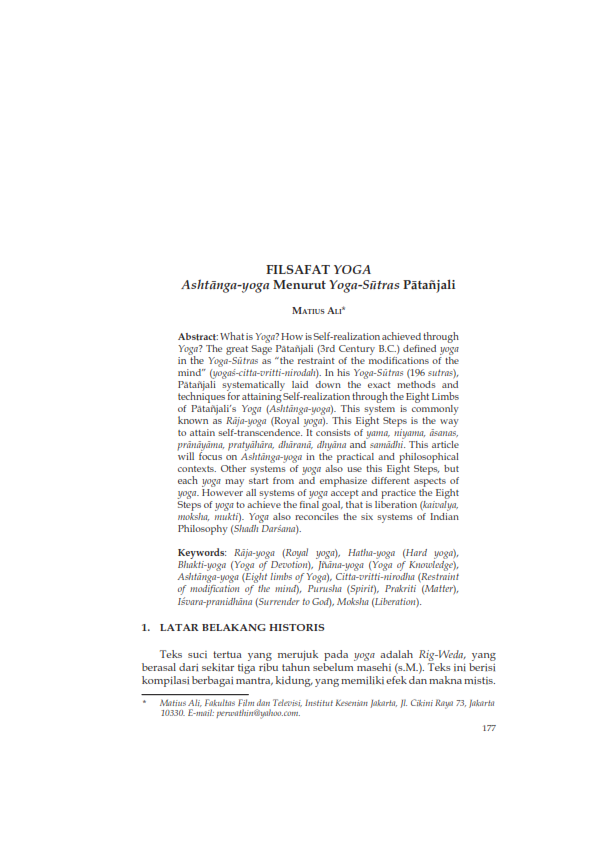FILSAFAT YOGA Ashtānga-yoga Menurut Yoga-Sūtras Pātañjali
Abstract
Abstract: What is Yoga? How is Self-realization achieved through Yoga? The great Sage Pātañjali (3rd Century B.C.) defined yoga in the Yoga-Sūtras as “the restraint of the modifications of the mind” (yogaś-citta-vritti-nirodah). In his Yoga-Sūtras (196 sutras), Pātañjali systematically laid down the exact methods and techniques for attaining Self-realization through the Eight Limbs of Pātañjali’s Yoga (Ashtānga-yoga). This system is commonly known as Rāja-yoga (Royal yoga). This Eight Steps is the way to attain self-transcendence. It consists of yama, niyama, āsanas, prānāyāma, pratyāhāra, dhāranā, dhyāna and samādhi. This article will focus on Ashtānga-yoga in the practical and philosophical contexts. Other systems of yoga also use this Eight Steps, but each yoga may start from and emphasize different aspects of yoga. However all systems of yoga accept and practice the Eight Steps of yoga to achieve the final goal, that is liberation (kaivalya, moksha, mukti). Yoga also reconciles the six systems of Indian Philosophy (Shadh Darśana).
Keywords: Rāja-yoga (Royal yoga), Hatha-yoga (Hard yoga), Bhakti-yoga (Yoga of Devotion), Jñāna-yoga (Yoga of Knowledge), Ashtānga-yoga (Eight limbs of Yoga), Citta-vritti-nirodha (Restraint of modification of the mind), Purusha (Spirit), Prakriti (Matter), Iśvara-pranidhāna (Surrender to God), Moksha (Liberation).

DISKURSUS applies the Creative Commons license (CC BY). We allow readers to read, download, copy, distribute, print, search, or link to the full texts of its articles and allow readers to use them for any other lawful purpose. The author must be aware that the article copyrights will be fully transferred to DISKURSUS if the article is accepted to be published in the journal. Once the manuscript has been published, authors are allowed to use their published article under DISKURSUS copyrights. Full information about CC BY can be found here: https://creativecommons.org/licenses/by/4.0/












